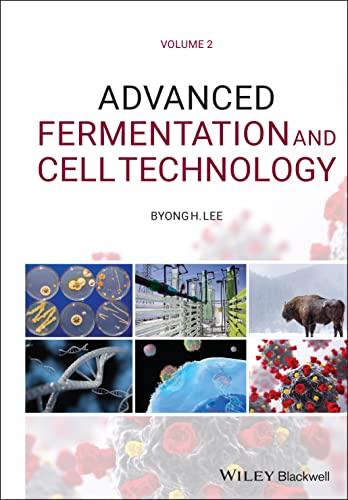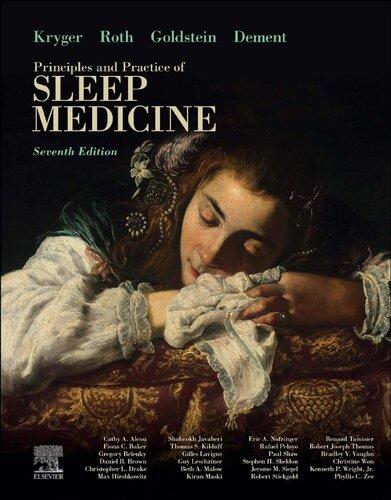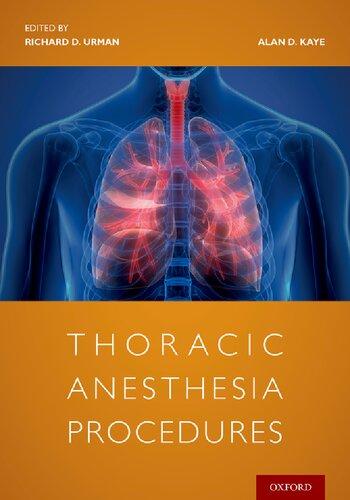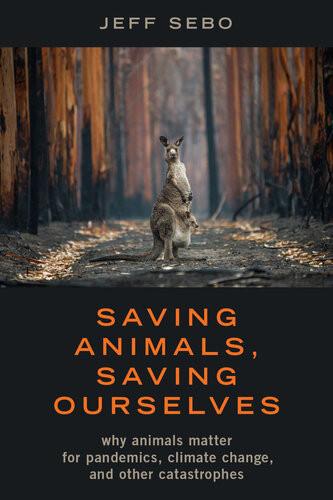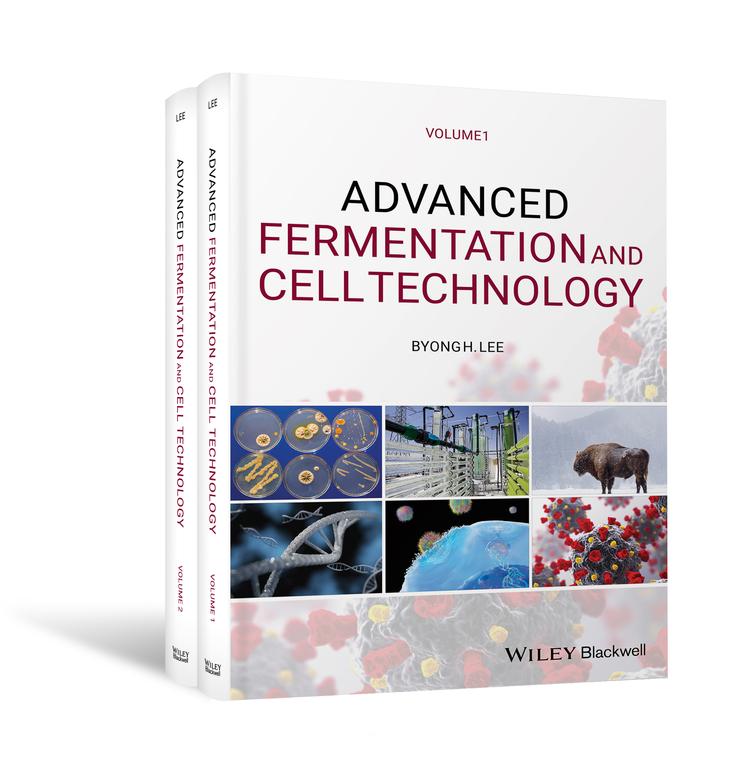AdvancedFermentation andCellTechnology
Volume2
ByongH.Lee
SportBiomics,CA,USAandHeilenexPharmaInc.,Toronto,Canada
KangwonNationalUniversity,Chuncheon,SouthKorea
JiangnanUniversity,Wuxi,China
McGillUniversityandAAFC,Quebec,Canada
Thiseditionfirstpublished2022
©2022JohnWiley&SonsLtd
Allrightsreserved.Nopartofthispublicationmaybereproduced,storedinaretrievalsystem,or transmitted,inanyformorbyanymeans,electronic,mechanical,photocopying,recordingor otherwise,exceptaspermittedbylaw.Adviceonhowtoobtainpermissiontoreusematerialfrom thistitleisavailableat http://www.wiley.com/go/permissions
TherightofByongH.Leetobeidentifiedastheauthorofthisworkhasbeenassertedinaccordance withlaw.
RegisteredOffices
JohnWiley&Sons,Inc.,111RiverStreet,Hoboken,NJ07030,USA
JohnWiley&SonsLtd,TheAtrium,SouthernGate,Chichester,WestSussex,PO198SQ,UK
EditorialOffice
TheAtrium,SouthernGate,Chichester,WestSussex,PO198SQ,UK
Fordetailsofourglobaleditorialoffices,customerservices,andmoreinformationaboutWiley productsvisitusat www.wiley.com.
Wileyalsopublishesitsbooksinavarietyofelectronicformatsandbyprint-on-demand.Some contentthatappearsinstandardprintversionsofthisbookmaynotbeavailableinotherformats.
LimitofLiability/DisclaimerofWarranty
Whilethepublisherandauthorshaveusedtheirbesteffortsinpreparingthiswork,theymakeno representationsorwarrantieswithrespecttotheaccuracyorcompletenessofthecontentsofthis workandspecificallydisclaimallwarranties,includingwithoutlimitationanyimpliedwarrantiesof merchantabilityorfitnessforaparticularpurpose.Nowarrantymaybecreatedorextendedbysales representatives,writtensalesmaterialsorpromotionalstatementsforthiswork.Thefactthatan organization,website,orproductisreferredtointhisworkasacitationand/orpotentialsourceof furtherinformationdoesnotmeanthatthepublisherandauthorsendorsetheinformationor servicestheorganization,website,orproductmayprovideorrecommendationsitmaymake.This workissoldwiththeunderstandingthatthepublisherisnotengagedinrenderingprofessional services.Theadviceandstrategiescontainedhereinmaynotbesuitableforyoursituation.You shouldconsultwithaspecialistwhereappropriate.Further,readersshouldbeawarethatwebsites listedinthisworkmayhavechangedordisappearedbetweenwhenthisworkwaswrittenandwhen itisread.Neitherthepublishernorauthorsshallbeliableforanylossofprofitoranyother commercialdamages,includingbutnotlimitedtospecial,incidental,consequential,orother damages.
LibraryofCongressCataloging-in-PublicationData
Names:Lee,ByongH.,author.
Title:Advancedfermentationandcelltechnology/ByongH.Lee, SportBiomics,CA,USAandHeilenexPharmaInc.,Toronto,Canada,KangwonNational University,Chuncheon,SouthKorea,JiangnanUniversity,Wuxi,China,McGillUniversityand AAFC,Quebec,Canada.
Description:Hoboken,NJ,USA:Wiley-Blackwell,2022.|Includes bibliographicalreferencesandindex.
Identifiers:LCCN2020026477(print)|LCCN2020026478(ebook)|ISBN 9781119042761(cloth)|ISBN9781119042785(adobepdf)|ISBN 9781119042778(epub)
Subjects:LCSH:Fermentation.|Industrialmicrobiology.
Classification:LCCTP505.L442021(print)|LCCTP505(ebook)|DDC 660/.28449–dc23
LCrecordavailableathttps://lccn.loc.gov/2020026477
LCebookrecordavailableathttps://lccn.loc.gov/2020026478
CoverDesign:Wiley
CoverImages:TubularbioreactorsfilledgreenalgaefixingCO2©SantiagoUrquijo/GettyImages, CulturesgrowingonPetridishes©WLADIMIRBULGAR/SCIENCEPHOTOLIBRARY/Getty Images,CARTcellimmunotherapy,illustration©KEITHCHAMBERS/SCIENCEPHOTO LIBRARY/GettyImages,BisonorAurochsinwinterseasonintheirhabitat©danm/Getty Images,CoronaVirusCopySpace©BlackJack3D/GettyImages,illustration3dDNASpinFuturistic digitalbackground,AbstractbackgroundforScienceandtechnology©Jackyenjoyphotography/ GettyImages
Setin9/11ptandTimesTenLTStdbyStraive,Chennai,India
OverviewonMarketSizeofBioproductsandFundamentalsofCellTechnologyxiii
PartI1 1MicrobialCellTechnology1
1.1Basicbacterialgrowthandmodeoffermentation1
1.2Basicfungalgrowth22
1.3Classicalstrainimprovementsandtools26
1.3.1Naturalselectionandmutation26
1.3.2Recombination30
1.4Modernstrainimprovementandtools32
1.4.1Genomeshuffling33
1.4.2RecombinantDNAtechnology34
Summary 58
1.4.3RNAinterference(RNAi)andCRISPR/Castechnologyforgenomeediting59
Summary 72
1.4.4Molecularthermodynamicsanddown-streamprocessesonbioproducts72
Summary 83
1.4.5Proteinengineering84
Summary 91
1.4.6Genomics,proteomics,metagenomics,andbioinformatics91
Summary 99
1.4.7Systems/syntheticbiologyandmetabolicengineering100
Summary 106
1.4.8Quorumsensingandquenching106
Summary 110
1.5Bioengineeringandscale-upprocess111
1.5.1Microbialandprocessengineeringfactorsaffectingperformanceandeconomics114
1.5.2Fermenterandbioreactorsystems114
1.5.3Masstransferconcept116
1.5.4Heattransferconcept120
1.5.5Massandheattransferpractice123
1.5.6Scale-upandscale-downoffermentations137
1.5.7Scale-upchallenges146
Summary 150
1.6Newbioprocessesoffermentation150
1.6.1Growth-arrestedbioprocesses150
1.6.2Integratedbioprocesses154
1.6.3Consolidatedbioprocessing(CBP)158 Summary 160 Bibliography 161
2ApplicationsofMicrobialFermentationtoFoodProducts,Chemicalsand Pharmaceuticals173
2.1Fermenteddairyproducts173
2.1.1Basicknowledgeofmanufactureofdairyproducts177
2.1.2Geneticengineeringoflacticacidbacteria186 Summary 197 Bibliography 197
2.2Fermentedmeatandfishproducts199
2.2.1Fermentedmeatproducts199
2.2.2Fermentedfishproducts204 Summary 207 Bibliography 208
2.3Fermentedvegetableandcerealproducts209
2.3.1Fermentedvegetableproducts209
2.3.2Fermentedcerealproducts214
2.4.1Aceticacid221
2.4.2Citricacid224
2.4.3Lacticacid225
2.4.4Malicacid227
2.4.5Fumaricacid228
2.5Fermentation-derivedfoodandfeedingredients231
2.5.3Vitaminsandpigments264
2.5.4Microbialpolysaccharidesandbiopolymers276
2.6Bacteriocinsandbacteriophages296
2.8Biomass(SCP)andmushrooms332
2.8.1Biomass(SCP)332 2.8.2Mushrooms343
2.12Pharmaceuticals,growthpromoters,andbiopesticides467
3.1Animalcellculture579
3.1.1Introduction579
3.1.2TechniquesofRNAiandCRISPR580
3.1.3Animalcelllines580
3.1.4Upstreamanddownstreambioprocessing590
3.1.5Straindevelopmentofanimalcellcultures593
3.1.6Applicationsofanimalcellcultures595
3.2Transgenicanimalbioreactors661
3.2.1Introductionandtechniques661
3.2.2Applicationsoftransgenicanimals664
PartIV687
4.1Introduction 687
4.2Planttissueculture689
4.3Applicationsofplanttissueculture697
4.3.1Traditionalplantbreeding(non-recombinantDNAtechniques)698
4.3.2Generalmediaforplanttissueculture739
4.3.3Bioreactortypesofplantcellcultures741
4.3.4ModernplantbreedingorBiotech/GMcrops(recombinantDNAtechniques)759
5SafetyIssuesofNewBiotechnologiesonMicrobial,Animal,andPlantCells801
5.1Introduction 801
5.2Safetyevaluationofnovelfoodsandcellcultureproducts802
5.2.1Geneticallymodifiedmicroorganismsandtheirproducts804
5.2.2Geneticallymodifiedanimalcellcultures,animals,fishesandtheirproducts807
5.2.3Geneticallymodifiedplantsandtheirproducts820
Preface
ThetermfermentationderivedfromtheLatinverb fevere (boil)usedbyhumansforthe productionoffoodandbeveragessincetheNeolithicageistheoldestofallbiotechnologicalprocesses.Thefermentationprocessusedintheproductionofantibiotics,alcohol,bread,vinegarandotherfoodorindustrialproductsdiffersfromrespirationinthat organicsubstancesratherthanmolecularoxygenareusedaselectronacceptors.Aftersuccessfulmicrobialfermentationprocessesonmicrobialcells(biomass),microbialenzymes, microbialmetabolitesincludingantibiotics,andotherfermentedfoods,currentlymore than3500differentfermentedfoodsareconsumedbyhumansworldwide.Thepotential offermentationtechniqueswasdramaticallyincreasedinthelate1960sand1970sthrough achievementsinmoleculargenetics,cellfusion,andenzymetechnology.However,additionalcompletelynovel,powerfultechniquessuchasgeneticengineeringviarecombinant DNAtechnologyin1973andhybridomatechnology(monoclonalantibody)in1975were responsibleforthecurrentbiotechnologyboom.
Ingeneticengineering,aknowngeneisinsertedintoamicrobial,animal,orplantcellin ordertoachieveadesiredtraitfortheoverproductionoftargetcompounds,butmicroorganismshaveplayedamajorroleinthedevelopmentofbiotechnology.Thisisduetothe rapidgrowthofmicrobes,cheapgrowthmedia,massivediversityinthemetabolitetypes andeasyofgeneticmanipulation.However,masscultureofanimalcelllinesisalsoimportanttomanufactureviralvaccinesandothertherapeuticrecombinantproductssuchas enzymes,hormones,immunologicals(monoclonalantibodies,interleukins,lymphokines, etc),andanticanceragents.Mammaliancellscultivatedinbioreactorshavesurpassed microbialsystemsforproducingtherapeuticrecombinantproteinsbecauseoftheir capacityforproperproteinfolding,assemblyandpost-translationalmodification.Major therapeuticrecombinantproteinsaresuccessfullycommercialized,butexpensiveanimal freemedia,costofproductioninlargescalewithlowyield(thetens-of-milligrams/liter), microbialcontamination,andgeneregulationaretheimportantissuestoberesolved. Othercellcultureresearchisalsounderwaytoproducesuchcomplextherapeuticproteins ininsectcell(baculovirus)orinhigherplants.Molecularbiopharmingusingtransgenic animalssuchasgoatandpigforrDNAproteinshavealsosuccessfullycommercialized.
Fermentationtechnologyfortheproductionofcompoundsthatfindapplicationinfood, biochemical,biomaterial,bioenergy,pharmaceuticalsectorsencompassesabroadfield,not onlyincluding(1)conventionalmicrobialandenzymesystems,(2)geneticandmetabolic engineering,alongwithsystemsbiology/syntheticbiology,andgenomeediting,butalso including(3)mammaliancellandplantcellsystems.Despitealonghistoryoffermentation processesforgenerations,therequirementforsustainableproductionofbioenergyandbiomaterialsisalsodemandinginnovationanddevelopmentofnovelfermentationconcepts. Continuedintroductionofnewtechnologyincellculturesystemsdemandsinnovationin newbioreactorprocessdevelopmentandscaleupprocessesforcellfactorypotential.
Thisbookreflectsthistransitionfromtraditionalfermentationtechnologytonewcell fermentationtechnology,thatprovidesequalemphasisonmicrobial,mammalianaswellas plantcelltechnologiesfornewandimprovedprocessesandproductsintoday’sbiochemical processindustry.
Currentlytwofermentationtextbooksavailableonthemarket(1999)areoutdatedand donotdealwithcurrentprogressinfermentationandcellculturetechnologiesandcommercialrecombinantbioproducts.Mostothereditedvolumesaretheworkofmultiple contributorsandnormaldidacticcriteriaforexplanationofevolvingnewtechniquesand applicationsarelacking.Experienceinteachingthissubjecthasmadeclearthatthebasic conceptsandessentialfeatureshavenotbeencoveredinatypicalsciencecurriculum.The primaryobjectiveofwritingthisbookistorelatethefoodfermentationandcellculture biopharmaceuticalactivesusingdifferentexpressionhosts.Productdiversitymakesfermentationtechnologyamulti-disciplinaryexpertiseassociatedwithmicrobiology,organic chemistry,biochemistry,andmolecularbiology.Remarkableadvancesintheseareaswill helptoliftpeopleoutofwretchedandempowerthemwithnewknowledge.Thesubject matterisdividedintoPartV,includingmicrobiology,biotechnology,molecularbiology, biochemicalengineering,andglobalmarketsizeofbioproducts,andtheirapplications.
PartIcoversmicrobialcelltechnologyandculturetools(includingclassicalstrain improvementsandtools)andmodernstrainimprovementandtools(genomeshuffling, recombinantDNAtechnology,RNAinterference(RNAi)andCRISPR)/Castechnologyforgenomeediting;alsoincludesmolecularthermodynamicsforbiotechnology, proteinengineering,genomics,proteomicsandbioinformatics,systems/syntheticbiologyandmetabolicengineering,quorumsensingandquenching.Otherbioengineering andscale-upprocessesandnewbioprocessesoffermentationsuchasgrowth-arrested bioprocess,integratedbioprocess,andconsolidatedbioprocessing(CBP)areincluded.
PartIIdealsapplicationsofmicrobialfermentationtofoodproducts(dairy,meat/fishes, vegetable/cereals),organicacids,foodingredients,chemicals,andpharmaceuticals.Food products/ingredientsincludedflavorsandaminoacids,sweeteners,vitaminsandpigments,microbialpolysaccharides/biopolymers,bacteriocinsandbacteriophages,enzymes, biomass(SCP)/mushrooms,functionalfoodsandnutraceuticalssuchasprobioticsand prebiotics,andmicrobiome.Othersincludedalcoholicbeveragesandotherfermentation chemicals(bioethanol,biobutanol/biobutandiol,biodiesel,biomethane,biohydrogen).In finalsection,pharmaceuticalssuchasantibiotics,antibioticgrowthpromoters,antitumor drugs,steroids/statins,andbiopesticidesincluded.
PartIIIcovers(i)animalcelltechnologyincludinganimalcellculture,bioprocessing, straindevelopment,applications(monoclonalantibodies,differentvaccines(DNAvaccines,ediblevaccines,zikavaccines,hepatitisvaccines,HIVvaccines,COVID19vaccines), and(ii)transgenicanimalbioreactors,andapplicationsinanimalsandfishes,etc.PartIVon plantcelltechnologycoveredplanttissueandcellcultureandapplications,bioreactortypes (seed-basedbioreactor,plantcellsuspensionbioreactor,hairyrootbioreactor,chloroplast bioreactors)andmodernplantbreedingorbiotech/GMcropsandtheirapplications.
Finally,PartVdealswithsafetyissuesofnewbiotechnologiesonmicrobial,animal,and plantcells.
Thisbookaimstogivereaders,generalsciencestudents,researchers,andindustrial practitionersaswellasinstructors,anoverviewoftheessentialfeaturesofadvancedfermentationandcellculturetechnology.Iwouldliketothankmystudents,post-docs,and formercolleaguesatMcGillUniversity(Canada),JiangnanUniversity(China)andKangwonNationalUniversity(Korea),who,forthepast37years,havehelpedandsuggested meinteachingthissubjectcourse.
Amongtheoverhundresofmyformergraduatestudentsandpost-docs,Iwouldliketo dedicatethisbookspecificallytomybelovedformerstudents,Dr.YoungJ.ChoiandDr. MarcioBeleminMontreal,whombothpassedawaysuddenly.
Lastbutnotleast,ImustthankmywifeYoungforherloveandencouragement,together withthepatienceofmysons,Edwardandhisfamily(wifeMaria,sonMaxim)inToronto andDavidandhisfamily(wifeRonit,daughterRomy)inSantaMonica,Californiaduring thepreparationofthisvolume.
September,2021
ByongH.Lee Toronto,Canada
OverviewonMarketSizeof Bioproductsand FundamentalsofCell Technology
Biotechnologyandglobalmarketsizeofbioproducts
Theterm“biotechnology”wasfirstusedbyKarlErekyin1919,meaningtheproductionof productsfromrawmaterialswiththeaidoflivingcellssuchasmicrobe,animal,andplant infermentersorbioreactorsthroughprocessoptimization.
Biotechnologyisabroaddisciplineusingalllivingcells,orpartsofthistodevelop products,andservicestomeettheneedsofhumans.Newtoolsandproductsdevelopedby biotechnologyhavebeenusefulinresearch,agriculture,industry,andtheclinic.Industrial biotechnologyexperienceinfermentationtechnologystartedinthefieldofsingle-cell proteinproductionandthenmovedontothedevelopmentsoffermentationtechnologies producingantibiotics,aminoacids,antitumoragents,statins,vitamins,steroids,and majorityoffermentedfoods.Asaresultofthisprocessdevelopmentactivity,microbial cellculturetechnologyhasbecomeoneoftheleadingsuppliersoftop-qualityfermentationtechnologies.Thisdomainmarketiscontinuouslyexpandinginallcontinents,with confidentialcooperationinvolvingsmallandmultinationalcompanies.Microbialcell fermentationtechnologyhasbeenalong-favoredorganicprocessbecauseofitssimplicity ofreaction,highspecificity,lowcosts,andflexibilityofapplication.Majorityindustries havecomplementedtheessentialprincipleoffermentationwithadvancesintechniques andbiotechnologytoincreaseitsapplicationtotheassemblyofaspreadofbiochemicals, biomolecules,andbiofuels.
Table1showsthefermentationbiotechnologymilestonesandsomerecombinantproteins.
Thefermentation’sapplicationareasarebroadfromfoodstuffslikewine,cheese, bread,andbeer,intohigh-valuechemicals,pharmaceuticalproducts,andfood-related chemicals.Amongmanymorethan100recombinantproteinsknown(Sandez-Garcia etal.,2016),onlyfewarelistedinthistable.Further,risinghydrocarboncostsand depletingfuelreserveshavealsocreatedastrongcaseforaffordableandeasyfermentationprocessesformanufacturingbiofuelchemicals.Microbialcellfactoriesforthe productionofbio-basedchemicalshavebeenusefulfordiverseindustrialapplications andforachievingasustainablefuture,buttheoverexpressionofheterologousenzymesin
Table1 Fermentationbiotechnologymilestonesandsomerecombinantproteins
DateMilestone
Oldbiotechnology
Before6000
B.C.
Before14th century
Breadleavening,alcoholicdrinks,andfruitvinegars
Beerandwine,vinegarbytheOrleansprocess
1650CultivationofFrenchmushrooms
1680AntonvanLeeuwenhoekfirstobservationofyeastcells 1857–1876LouisPasteurfirstdiscoveryofmicroorganismscausingfermentation 1881Lacticacidproductionbymicrobe
1885ArtificialgrowingofmushroomsintheUSA)
19thcenturyProductionofethanol,acetate,butanol,acetone,andcitrate,glycerol,baker’syeast,and sewagetreatment
1940sMasscultivationofmicrobesforantibiotics(penicillin,streptomycin,chlorotetracycline), bioingredients(aminoacids,enzymes,vitamins,polysaccharides),steroids,andvaccines
1953DiscoveryofDNAbyWatsonandCrick
1957L-GlutamateproductionbyKinoshitaetal.
1955–60Citricacidproductionbysubmergedfermentation
NewBiotechnology
1970–1972Transformationof E. coli byplasmidDNA
1973FirstdiscoveryofrestrictionenzymesandDNAligasesbyCohenandChang
1974Firstexpressionofheterologousgenein E.coli
1975InventionofhybridomatechniqueformonoclonalantibodiesbyCésarMilsteinand GeorgesJ.F.Köhler
1978Firstdiscoveryofrecombinantprotein,somatostatin
1980Cohen/BoyerpatentonrecombinantDNAtechnology;Genentechestablished
1982Recombinanthumaninsulin(Humulin®)by E.coli
1983Heterologousplantgeneexpression;PolymeraseChainReaction(PCR)byKaryMullis/Cetus (Nobelprize)
1985Recombinanthumangrowthhormone(Protropin®)by E.coli
1986Recombinantvaccine,RecombivaxHB(hepatitisBvaccineby S.cerevisiae Recombinantgamma interferon,RoferonA® by E.coli
1987Recombinanttryptophan,recombinanttissueplasminogenactivator,Activase®)byCHO*
1989Recombinantinterleukin-2,Proleukin® by E.coli,Recombinant γ-interferon,Immuneron® by E.coli
1989–1991Recombinantchymosin(Gist-Brocades,Genencor,andPfizer)by E.coli and Aspergillus oryzae
RecombinantproductionofvitaminC(ascorbicacid)byGenencorInternational,lacticacid bacteriaresistanttobacteriophage
1990Maltase-enhancedbaker’syeast(Gist-Brocades)
1992RecombinantbloodclottingfactorVIII(Recombinate® byGeneticInstitute/Baxter; Kogenate® byBayer,Defacto® (Wyeth)usinganimalcelllines;Lipase(Unilever), Amylase(Novomil®)
1993Site-directedmutagenesisbyMichaelSmithatUBC(Nobelprize)
1994GeneticallymodifiedFlavrSavrtomato(Calgene,discontinuedin1997),recombinant bovinesomatotropin,BST(EliLilly;Monsanto),engineeredbrewingyeast(Carlsberg ResearchCentre),andacetolactatedecarboxylase(Maturex) 2003–2013Epogen(erythropoietin,EPO)bymammaliancells(Amgen),Neupogen(granulocyte colony-stimulatingfactor,G-CSF)by E.coli (Amgen),Fabrazyme(human alpha-galactosidase,Genzyme)byCHO1996–2015
Over47herbicide-resistant(HT)andinsect-resistant(BT)cropsonmarket2018 GoldenRice(aprovitamin)approvedbyUSFDA;GMAtlanticsalmondevelopedby AquaBountyTechnologiesonmarketinCanadaandUSA(FDAapproved)
∗ CHO:ChineseHamsterovaries.
Source:Lee,2015.
Microbial cells
– Fermented foods (beer, yogurt, soy, etc)
– Bioingredients (enzyme, amino acid, gum, vitamin, etc)
– Pharma products (antibiotics, steriods, recombinant proteins, etc)
Cell Culture Technology
Animal cells
– Animal breeding – Transgenic animals – Animal (mammalian) cell culture
Plant cells
– Crop breeding – Transgenic plants – Plant cell culture
Figure1 Conceptofcellculturetechnologyderivedfrommicrobes,animals,andplants. Source:Nader Khouri/GettyImages;ToniBarros/ https://en.wikipedia.org/wiki/Dolly_(sheep)#/media/File:Dolly_face_ closeup.jpg /CCBY-SA2.0;Dreamstime;Shutterstock.com;Flickr,Inc.;ThomasNorthcut/GettyImages; maksymyemelyanov/123RF.(Seeinsertforcolorrepresentationofthisfigure.) recombinantstrainsoftenleadstometabolicimbalance,resultingingrowthretardation andsuboptimalproductionofthetargetcompounds(Luetal.,2018).Thus,itisessential toaddressmetabolicimbalancescausedbyengineeredpathwaysinmicrobialhosts.For establishingavibrantbio-basedeconomy,multivariatemodular metabolicengineering, modularco-cultureengineering,systemsbiology,andintegrativegenome-scalemetabolic modelingcanbeexploitedtoexpeditestrainoptimizationandimprovetheproduction yieldofmanyhigh-valuebio-basedchemicals.
Figure1showsconceptofcellculturetechnologyderivedfrommicrobes,animals,and plants.Intransgenic(geneticengineering)technologyeitherincellsofmicrobes,animals, orplants,aknowngeneforadesiredtraitisinsertedintothembyrecombinantDNAtechniquesorgenomeeditingby CRISPER/Cas9 techniques.Despiteofthepotentialuseofall livingforms,amajorplayerinthedevelopmentoffermentationbiotechnologyismicroorganisms,becauseoftheeaseofmassgrowth,therapidgrowthincheapwastematerialsas media,andthemassivediversityofmetabolictypes,whichinturngivesdiversepotential productsandtheeaseofgeneticmanipulationtoimprovestrainsfornewproducts.
Itisestimatedthattheglobaleconomicvalueofindustrialbiotechnology,renewablechemicalsandpolymers,biofuels,enzymes,andbio-basedmaterialsisabout US$355.28billion,amongwhichUSgenerates58%ofthevalue,ormorethan US$205billion(www.bio.org/worldcongres).Theproductionofbio-basedchemicalsalonecanyieldanannualrevenueofUS$10–15billionintheglobalchemical industryby2020(www.iwbio.de/fileadmin/Publikationen/IWBio-Publikationen/WEF_ Biorefineries_Report_2010.pdf).
Fermentation’sapplicationareasarebroadfromfoodstuffslikewine,cheese,bread, andbeer,intohigh-valuechemicals,pharmaceuticalproducts,andfood-relatedchemicals. Amongmanymorethan100recombinantproteins(Sandez-Garciaetal.,2016),onlyfew arelistedinthistable.Further,risinghydrocarboncostsanddepletingfuelreserveshave alsocreatedastrongcaseforaffordableandeasyfermentationprocessesformanufacturing biofuelchemicals.Microbialcellfactoriesfortheproductionofbio-basedchemicalshave beenusefulfordiverseindustrialapplicationsandforachievingasustainablefuture,butthe overexpressionofheterologousenzymesinrecombinantstrainsoftenleadstometabolic imbalance,resultingingrowthretardationandsuboptimalproductionofthetargetcompounds(Luetal.,2018).Thus,itisessentialtoaddressmetabolicimbalancescausedby engineeredpathwaysinmicrobialhosts.Forestablishingavibrantbio-basedeconomy, multivariatemodularmetabolicengineering,modularco-cultureengineering,systemsbiology,andintegrativegenome-scalemetabolicmodelingcanbeexploitedtoexpeditestrain optimizationandimprovetheproductionyieldofmanyhigh-valuebio-basedchemicals. GeneticallymodifiedbacteriasuchastheGram-negative Escherichiacoli (E. coli)areused toproducelargeamountsofproteinsforindustrialuse,butbecauseofthehighcostof extractionandpurification,onlyhighvalueproductshavebeenproducedatanindustrial scale.Althoughtherecentlydevelopedsecretaryexpressionsystemof E.coli usingsignalpeptideoptimization,periplasmicleakage,andchaperonesco-expressionarereported (Zhouetal.,2017),the E.coli speciesexhibitssomelimitationsastheheterologousproteinsaretypicallyexpressedintracellularly,whichresultsinproblemswithformationof inclusionbodiesandincorrectproteinfolding.Thus, Bacillussubtilis hasbecomeanindustrialworkhorseforrecombinantproteinproductionduetoaneasycultivation,theproducts ofgenerallyrecognizedassafe(GRAS),easeofgeneticmanipulation,well-characterized expressionsystems,absenceofsignificantcodonbias,andexceptionalabilitytosecrete heterologousproteinsallowingcost-effectivedownstreamprocessing(Eivindetal.,2018). However,manyrecombinantproteinsrequireproteinmodifications,suchasglycosylation thatareavailableonlyineukaryoticcellsinthatthissometimesleadstotheuseofyeast, insectcells,andmammaliancellculturesystems.Somemedicinaluseofrecombinantbacteria(E.coli) oryeasts(Saccharomycescerevisae,Pichiapastoris)wastoproducetheprotein insulintotreatdiabetes,clottingfactorstotreathemophilia,humangrowthhormoneto treatvariousformsofdwarfism,interferontotreatsomecancers,erythropoietinforanemic patients,andtissueplasminogenactivatorwhichdissolvesbloodclots.
Outsideofmedicinetheyhavebeenusedtoproducerecombinantchymosin(cheese coagulatingenzyme),lipase,biofuels,andbioremediation,etc.Besides,withgreaterunderstandingoftherolethatthemicrobiomeplaysinhumanhealth,thereisthepotentialto treatdiseasesbygeneticallyalteringthebacteriatothemselvesbetherapeuticagentsinour review(Dalirietal.,2018).Themainideasincludealteringgutbacteriatodestroyharmfulbacteriaorusingbacteriatoreplaceorincreasedeficientenzymesorproteins.One researchfocusistomodify Lactobacillus bacteriathatnaturallyprovidesomeprotection againstHIV,withgenesthatwillfurtherenhancethisprotection.However,themicrobiome couldalsoraisesafetyconcernsasinteractionsbetweenbacteriaandthehumanbodyare lesswellunderstoodthanwithtraditionaldrugs.Thereareconcernsthathorizontalgene transfertootherbacteriacouldhaveunknowneffects.Asof2018therearemanyclinical trialsunderwaytestingtheefficacyandsafetyofthesetreatments(Reardon,2018).
Besidesmicrobialfermentedfoods,foroveracentury,bacteriahavealsobeenusedin agriculturalcropsinwhich Rhizobia (andmorerecently Azospirillum)havebeeninoculatedtoincreasetheirproductionortoallowthemtobegrownoutsidetheiroriginal habitat.Itiswellknownthatapplicationof Bacillusthuringiensis (Bt)andotherbacteria canhelpprotectcropsfrominsectinfestationandplantdiseases.Withadvancesingenetic
engineering,thesebacteriahavebeenmanipulatedforincreasedefficiencyandexpanded hostrangeaswellastracingthespreadofthebacteriabymarkers. Pseudomonas strains ofbacteriacausingfrostdamagebynucleatingwaterintoicecrystalsaroundthemselves ledtothedevelopmentofice-minusbacteria,thathavetheice-forminggenesremoved. Whenappliedtocropstheycancompetewiththeice-plusbacteriaandconfersomefrost resistance(Yetisenetal.,2015).Otherapplicationsofgeneticallymodifiedbacteriainclude bioremediation,wherethebacteriaareusedtoconvertpollutantsintoalesstoxicformsuch asremovalofpetroleumhydrocarbonpollutantsbyincreasingthelevelsoftheenzymes usedtodegradeatoxinortomakethebacteriamorestableunderenvironmentalconditions(Fuentesetal.,2014;Yuniati,2018).
However,masscultureofanimalcelllinesisfundamentaltothemanufactureofviral vaccinesandmanybiologicalproductsproducedbyrecombinantDNAtechnologyinanimalcellculturesincludeenzymes,synthetichormones,immunobiologicalssuchasmonoclonalantibodies,interleukins,lymphokines,andanticanceragents.
Manysimplerproteinscanbeproducedbyengineeredbacterialcellcultures,but protein glycosylation (post-translationalmodification,PTM)isonlymadeinanimalcells.Asthe productioncostof mammaliancellcultures ishigh,however,other insectcells or higher plants using singleembryoniccell and somaticembryos areusingasasourcefordirectgene transferthrough particlebombardment,and transitgeneexpression.Mammaliancell-line productsproducedfrom CHO, BHK, NSO, meylomacells, C127, HEK293)accountfor over 70%ofcurrentlyapprovedbiotherapeuticproductsincludingmonoclonalantibodies.
Biopharmaceuticalsmaythusbeproducedfromengineeredmicrobialcellssuch E.coli oryeast,mammaliancellculture,plantcell/tissueculture,andmossplantsinvariousbioreactorsorphoto-bioreactors.Themainissuesofmammaliancellculturearecostofproductionandmicrobialcontaminationbybacteria,viruses,mycoplasma,orviruses.Potential safetyandethicalissuesincludeinengineeredwholeplantsandanimals,whichrepresent asignificantinvestorriskandrisksoverconsumeracceptance.
Majorkindsofrecombinanttherapeuticproteins(biopharmaceuticals)include:blood factors(FactorVIIIandFactorIX),thrombolyticagents(tissueplasminogenactivator), hormones(insulin,glucagon,growthhormone,gonadotrophins,hematopoieticgrowth factors(erythropoietin,colonystimulatingfactors),interferons(interferons-α,-β,-γ), interleukin-basedproducts(interleukin-2),vaccines(hepatitisBsurfaceantigen),monoclonalantibodies(various),andadditionalproducts(tumornecrosisfactor,therapeutic enzymes).
Theimportantanimalcellcultureproductsasmonoclonalantibodiesareproducedbyfusingnormalcellswithanimmortalizedtumorcellline.Recentadvances intherapeuticproteindrugdevelopmentareavailablefrom:www.researchgate.net/ publication/313463806_Recent_advances_in_therapeutic_protein_ drug_development.
Manyothertransgenicanimalshavealsobeenusedtosecretehumanproteins secretedinthemilkoftransgeniclivestock.Since1985,severalanimals,includingcow, goat,pig,horse,cat,rabbits,chickens,andmostrecentlydogaswellasfishes,have beencloned,butthemostresearchhasbeenoncattle.Manyapplicationsofanimal biotechnologiesarecontroversialforenvironmental,health,animalwelfare,andsocial reasons.Forexample,onlyasmallpercentageofcloningattemptsproduceliveoff-spring andmanyanimalclonesareunhealthy.Human-animalchimerasraisesafetyconcerns aboutwhethernewdiseasescouldbetransmittedtohumans,legalissuesaboutwhether suchcreaturescanbepatentedandowned,andthetroublingpossibilitythatthey coulddisplayhuman-likebehavioralcharacteristics(www.geneticsandsociety.org/topics/ animal-biotechnologies).
Molecularpharming isbasedonthreeperceivedadvantages:thelowcostsofgrowinganimalsorplants,theimmensescalabilityofagriculturalproduction,andtheinherent safetyofanimalsorplantsashostsforproducingpharmaceuticals.Thiscanproducearange ofproteinsproducedfromclonedanimals.Themainpotentialbenefitsofclonedanimals includetheproductionoffood,pharmaceuticals(“pharming”),theprovisionoforgansfor xenotransplantationintohumans,andthedevelopmentofmodelsofhumandiseases.The benefitstoagricultureincluderesistancetodisease,alteringthecarcasscompositionsuch thatitishealthiertoconsume,improvingthepig’sresistancetoheatstress,andprotecting theenvironment.Additionaltypesofgeneticmodificationswilllikelyprovideanimalswith characteristicsthatwillbenefithumansincurrentlyunimaginedways.
Althoughthemajorityof geneticallyengineeredanimals arestillintheresearchphase, someGManimalsandfishesalreadyonsaleincludeclonedpetcats,GMornamental fish,GMsalmon,clonedhorses,andatleastonerodeobull.TheGMcowsbybiotech companySABBiotherapeuticsproducedhumanantibodies,thatfightpathogens,that mayonedaytreatinfectiousdiseaseslikeEbola,influenza,andZikaandtheirpotential toaddressglobaloutbreaks.TheUSFoodandDrugAdministrationalsoapproveda GMchickenthatmakesadruginitseggstotreat“lysosomalacidlipasedeficiency”–araregeneticconditionthatpreventsthebodyfrombreakingdownfattymoleculesinside cells.In2014,theFDAapprovedadrugcollectedfromthemilkoflab-maderabbits totreathereditaryangioedema,ageneticdiseasethatcausesbodyswellingandcan befatal.In2009,theFDAapprovedaGMgoatthatcanmakeadruginitsmilkthat preventsfatalbloodclots(www.theverge.com/2016/12/3/13819482/genetically-engineeredanimals-drugs-sab-cows-pharming-future).
DespitethebanonclonedanimalsadoptedbytheEU,theclonedlivestockswouldbe usedasparentsofslaughterpigs,beefcattle,andpossiblyalsomilk-producingdairycows inChina,Canada,USA,andelsewhere.By2020,theUSFDAruledthatfoodproducts derivedfromclonedanimals(cattle,swine,goats,andtheoffspringofclonesofanyspecies traditionallyconsumedasfood)aresafeenoughandthatlabelingisnotrequiredbecause foodproductsfromclonedanimalsarenotmateriallydifferent(www.fda.gov/animalveterinary/animal-cloning/primer-cloning-and-its-use-livestockoperations).
Humanantithrombin,ATryn(brandname)byrEVOBiologics(formerGTCBiotherapeutics)in2006wasfirstmedicineproducedfromthemilkofgeneticallymodifiedgoats bymicroinjectionofhumanantithrombingenesintothecellnucleusoftheirembryos.
Agoatthatproducesspider’swebprotein,stronger(7–10times)andmoreflexiblethan steel(BioSteel)wassuccessfullyproducedbyaQuebecbasedCanadiancompany,Nixia Biotechnologies,andlaterbytheRandyLewislaboftheUniversityofWyomingandUtah StateUniversity(Service,2002).Thiscompanyalsohadcreatedlinesofgoatstoproduce recombinantversionsofeithertheMaSpI(MajorampullatespidroinI)ordraglineI(forits superiorelasticity,flexibilityandstrength)from Nephilaclavipes,thegoldenorbweaver) orMaSpII(Majorampullatespidroin2ordragline2from Nephilaclavipes)draglineproteinsintheirmilk.Whenthefemalegoatlactates,themilkcontainingtherecombinant DNAsilkwastobeharvestedandsubjectedtochromatographictechniquestopurifythe recombinantsilkproteins.Thepurifiedsilkproteinscanbedried,dissolvedusingsolvents (DOPEformation)andtransformedintomicrofibersusingwet-spinningfiberproduction methods.Thespunfiberstendtohavetenacitiesintherangeof2–3grams/denierandelongationrangeof25–45%.The“Biosteelbiopolymer”hadbeentransformedintonanofibers andnanomeshesusingtheelectrospinningtechnique.
Nexiaistheonlycompanywhichhassuccessfullyproducedfibersfromspidersilk expressedingoat’smilk.TheLewislabhasproducedfibersfromrecombinantspider
silkproteinandsyntheticspidersilkproteinsandgeneticchimerasproducedinboth recombinant E.coli andthemilkofrecombinantgoats,however,noonehasbeenable toproducethesilkincommercialquantitiesthusfar.Thecompanywasfoundedin 1993byDr.JeffreyTurnerandPaulBallardthatwassoldin2005toPharmathene.In 2018,twotransgenicgoatsweresoldtotheCanadaAgricultureMuseumafterNexia Biotechnologieswentbankrupt(https://en.wikipedia.org/wiki/BioSteel).Researchhas sincecontinuedbyRandyLewis,aprofessorformerlyattheUniversityofWyomingand nowatUtahStateUniversity,wherehewasalsoabletosuccessfullybreedspidergoats tocreateartificialsilk.Therearenowabout30spidergoatsatauniversity-runfarm. Applicationsofartificialspidersilkbiopolymersincludeusingitforthecoatingofall kindsofimplantsandmedicalproductsaswellasforartificialligamentsandtendonsdue toitselastictendencies,andalsosinceitisanaturalproductwhichwillsynthesizewell withthebody.Furthermore,artificialsilkbiopolymerscanbeapplicatedinpersonalcare productsaswellasintextileproducts.
AquaBountyTechnologiesoriginallydevelopedinCanadaandlaterbasedinMassachusetts(US)havesoldabout4.5tonsofGMsalmonfilletsinCanada.Theengineered AtlanticsalmonsdevelopedbyAquaBountyareproducedbycloningagrowthhormone genefromchinooksalmonandasecondaddedgenefromtheoceanpoutaccelerates growthbykeepingthehormonegeneonpermanently.AquaBountysaysthesalmongrow twiceasfastastypicalsalmonandconsume20–25%lessfoodpergramofnewflesh (http://aquabounty.com/about).However,thefirstGMfishtogoonsaleintheworldhas facedfierceoppositionfromenvironmentalgroups,whichfearthatiftheyescapefromthe tankswheretheyarerearedonPrinceEdwardIslandineasternCanada,theywillupset naturalecosystemsbybreedingwithnativesalmon.IntheUS,thesalmonwasclearedfor saleinlate2015,butitsmarketdebuthasbeenstalledbyargumentsoverhowitshouldbe labelled.NowthesalmonisbeingsoldinCanada,otherspeciesmayeventuallyfollowit ontothemarket.
Thegeneticallymodifiedpig(Enviropig™)developedbyUniversityofGuelphin Canadaistoexcretelessphosphorusinitsfeces.Itwillproducetheenzymephytasein itssalivaryglandstoenablemoreeffectivedigestionofphytate,theformofphosphorus foundinpigfeedingredientslikecornandsoybeans.
AnornamentalfishthatglowsinthedarkwascreatedbycloningjellyfishDNAintoa zebrafishandisonthemarket.However,GMfishmayescapeandcausegeneticdamage byhybridizingwithnativespecies.Sometropicalexoticfishsuchaspiranhasmaycause majorproblems.ThedetailswillbecoveredinthesectionofAnimalCellTechnology.
Recently,advanceshavealsobeenmadeintheproductionofforeignproteinsintransgenicplantsasalternativetomicrobialfermentationormammaliancellculture.Many therapeuticproteins,includingantibodies,bloodproducts,vaccines,hormones,cytokines, othertherapeuticagents,andenzymesarebeingproducedintransgenicplants.Theproper selectionofhostplantandgeneexpressionsysteminafoodcroporanon-foodcrop canactasbioreactorstoproducerecombinantproteinsinlargerquantitiesthanthose ofmammaliancellsystems.Plantsystemshavetheadvantagesinlarge-scaleproduction ofrecombinantproteinswithoutcontaminatinghumanpathogens.Althoughinthelast twodecades,approximately95biopharmaceuticalproductsincludingcytokines,enzymes, hormones,monoclonalantibodies,andvaccineshavebeenapprovedforthetreatmentof varioushumandiseases,noneofthecommercialproductsarecurrentlyproducedinplants, mainlyduetothelowyieldandexpensivepurificationcosts.However,plant-basedDNA vaccineshavepotentialevenforCOVID-19(Rosales-Mendozaetal.,2020).
GeneticmodificationofplantsinvolvesaddingaspecificstretchofDNAintotheplant’s genome,givingitnewordifferentcharacteristics.Thiscouldincludechangingthewaythe
plantgrowsormakingitresistanttoaparticulardisease.ThenewDNAbecomespartof theGMplant’sgenomewhichtheseedsproducedbytheseplantswillcontain.Thedetails oftransgenicplantswillbecoveredinPartIV.
Mostbiopharmaceuticalproductsarecurrentlymanufacturedcommerciallythrough variousfermentationprocessesbygeneticallyengineeredmicroorganisms(e.g., E.coli, yeast,fungi).Somehighlysuccessfuldrugsobtainedthroughfermentationroutesare: humaninsulin,streptokinase,erythropoietin,hepatitisBvaccine,humangrowthhormones, interleukin,granulocyte-colonystimulatingfactor(GC-SF),granulocyte-macrophage colonystimulatingfactor(GM-CSF),interferons(α, β, γ),andmanyrecombinantproteins. Thethreedomainsofmicrobes,animals,andplantsarenotonlyinvolvedinproductionof biopharmaceuticals,butalsohavetheirapplicationsinfoods(Figure1).Althoughpublic supportfornewbiotechnologyishighfornewdrugs(e.g.,insulin,interferon,hormone, etc.),diagnostics(cancerdetectionkits),foodenzymes(e.g.,recombinantrennetandother enzymes),andvaccines,publicperceptionsareagainstGMfoodsonthewhole,because oftheirsafetyissueandbecausefoodsareanissuethataffecteveryone,aseveryoneeats, aswillbecoveredinPartV.
Besidestheconceptofwholecellculturetechnologyderivedfrommicrobes,animals, andplantsinFigure1,anovel cellularagriculture (CA)terminologywasfirstusedin 2015.Providingfoodandhealthydietsforgrowingpopulation,tacklingdeforestationand climatechange,andreducingnegativeenvironmentalimpactsofconventionalagriculture constitutethegrandchallengesofcurrenttimes.By2050,theglobalpopulationwill reachto9.8billion,demandofourfoodsupplieswillbe60%higherthanitistoday. Atthesametime,climatechange,urbanization,andsoilerosionwilldecreaseofthe availabilityofarablelandandcropsaccountforonlyabout2%ofallplantbiomass includingnon-foodcrop(dx.doi.org/10.1038/nature25138).Deforestationisalsoadirect consequenceofanimalagricultureasmoreandmorefarmlandisrequiredtogrow cropsforanimalfeed.CAwillreducedeforestationastheproductionpracticesare decoupledfromlanduse.Althoughtheworldcurrentlyproducesmorethanenoughfood tofeedeveryone,815millionpeople(roughly11%oftheglobalpopulation)wereina stateofhungerin2016(www.fao.org/fileadmin/templates/wsfs/docs/expert_paper/How_ to_Feed_the_World_in_2050.pdf).Notonlyisprovidingsufficientfoodimportant,but thelow-qualitydietscausingmicronutrientdeficienciesandobesityarealsocurrently problems(dx.doi.org/10.1016/SO140-6736(18)31788-4).
ThisCAfieldisnotnew,asmicrobialcellproductionoffoodprotein(single-cellprotein), bioplastics(e.g.,biofilm,headset,etc.),leather-likemyceliumbiomaterials,recombinant rennet,spidersilkprotein,bacterialcellulose,andsoon,arealreadycommercialized(see PartII). Invitro animalcellculturesarewellestablishedandover32therapeuticproteins includinghumaninsulinarecommercialized(seePartIII).Also, invitro plantcellculture hasalreadybeenusedtoproducevarioussecondarymetabolitesandingredientsofpharmaceutical(e.g.paclitaxel,vinbrastineforanticancerdrugs,etc.),cosmetics(pigments), andfoods,etc.(seePartIV).However,recentCAterminologyincludemorefordevelopingagriculturalproducts,suchascell-basedanimalproducts,bycellculturesthanliving farmanimals(StephensandEllis,2020).
Thisincludes invitro orculturedmeat,andanimalproductslikemilk,leather,eggs, gelatinandsilkthrough tissueengineering and recombinantDNAfermentation-based industrialbiotechnologyprocessforfoodandmaterials(Rischeretal.,2020).
Inrecentyears,anumberofcellularanimalagriculturecompaniesandnon-profitorganizationshaveemergedduetothistechnologicaladvancesandincreasingconcernoverthe animalwelfareandrights,environmental,andpublichealthproblemsassociatedwithconventionalanimalagriculture.Someexamplesare:(i)intheUS,lab-grownMemphisMeats,
Bluefintuna-basedFinlessFoods,fermentation-basedGeltor(gelatin),ClaraFoods(egg white),PerfectDayandNewCulture(animal-freedairyproducts),ModernMeadow(fermentingcollagenforleather),(ii)inUK,lab-grownhamburgerwhichwascookedand tasted,(iii)inNetherlands,MosaMeatandMeatable,(iv)inIsrael,FutureMeatTechnol andAlephFarms,(v)inCanada,AppletonMeats,Biosteel(spiderwebsilk),(vi)inJapan, Integricultureandspidersilk,and(vii),inSingapore,ShiokMeats.Althoughcell-based meatmaybeidenticaltoconventionalmeat,CAtechnologyishardtodevelopbecause ofstructuralcomplexity.Moreover,thetexturethattastesmeatwillbehardtomimic. Biotech-derivedingredientssuchastofuandmorerecentlyfungalproteinQuornarewell known,butcell-basedmeatwhichwilltastelikeanimalmeat,withthesamenutritional value,requiresexpensiveserumtogrowcellsandscaleup,andsafetyissueareformidable challengestoovercome
Despitethemanydifficultchallengesahead,CAwillbeamajorpartofthesolution forthreeofhumanity’sgreatestchallenges:feeding10billionpeopleby2050,mitigatingclimatechange,andmitigatingthethreatofantibiotic-resistantandzoonoticdiseases (www.futurefields.io/post/cellular-agriculture-in-canada).
Figure2showsaschemeofmicrobialbioproductsandglobalsales(%)ofmicrobialproductsexceptforfermentedfoodsandalcoholbeverages.Globalsales(%) ofbioproductsexcludingfermentedfood/beveragesandbiorefineryproductscanbe shown,amongwhichantibiotics(42%)andbiopharmaceuticals(25%+ 17%)arethe majorbioproducts.TheglobalmarketforbioproductsisexpectedtogrowtoUS$700.7 billionby2018,withafive-yearcompoundannualgrowthrate(CAGR)of5.5%.The non-energeticmarket,whichincludeschemicals,pharmaceuticals,andmaterials,isthe fastest-growingsegmentoverallatatremendous14.9%CAGR,reachingUS$472.8 billionby2018,upfromUS$236.3billionin2013(www.bccresearch.com).Theglobal marketforbiorefineryproductsaloneisexpectedtoclinchUS$714.6billionby2021from US$466.6billionin2016atawhoppingCAGRof8.9%(https://tradeessential.com/events/ biorefinery-bio-based-chemical-2).
Intheglobalfermentedingredientsmarket,aminoacidhashadasignificantmarket shareduetothegrowingdemandforaminoacidsbyfoodandbeverageandanimalfeed additiveindustriesfromthelastfewyears.Thegrowingpreferenceforfermentedingredientsbyseveralpersonalcareproductmanufacturesintheirproductsledtothegrowth indemandoffermentedingredientsinpersonalcareindustry(www.marketwatch.com/ press-release/the-global-fermented-ingredients-market-to-2023-driven-by-the-growingdemand-of-fermented-ingredients-to-prompt-the-process-of-fermentation--researchandmarketscom-2018-09-26).Vitaminsarealsoexpectedtowitnesssubstantialgrowthaskeyfermentedingredientsinthefood&beveragesector,especially duetotheirincreasingapplicationinprobioticdrinkssuchaskefir.Globalmarkets ofbiorefineryproductsarealsohighwithdata,from2010to2013,andprojectionsof CAGRsthrough2018.Biorefineryproductsbrokendownbyproductdemandinclude energetic(ethanol,biodiesel,electricity/heat),non-energetic(chemicals,materials, herbal/botanicals),andbyothersegments,suchasfuel(transport,mechanical,etc.), energy(heat,electricity),material(plastics,resins),chemical(alcohols,solvents,acids, surfactants,etc.),andherbal/botanical(drugs,bodycare,aroma,etc.).Forecastsfor biomassconversionprocessesandequipmenttoproducefuels,power,andchemicals frombiomassareincludedintheprospectsforbiorefineriesbuiltondifferentplatforms,suchasthe“sugarplatform,”basedonfermentationofsugarsextractedfrom biomassfeedstocks,versusthe“syngasplatform,”basedonthermochemicalconversion processes.Thenon-energeticbioproductsmarketwillreachUS$477.0billionby2021 fromUS$281.7billionin2016ataCAGRof11.1%,from2016to2021.Theenergetic

